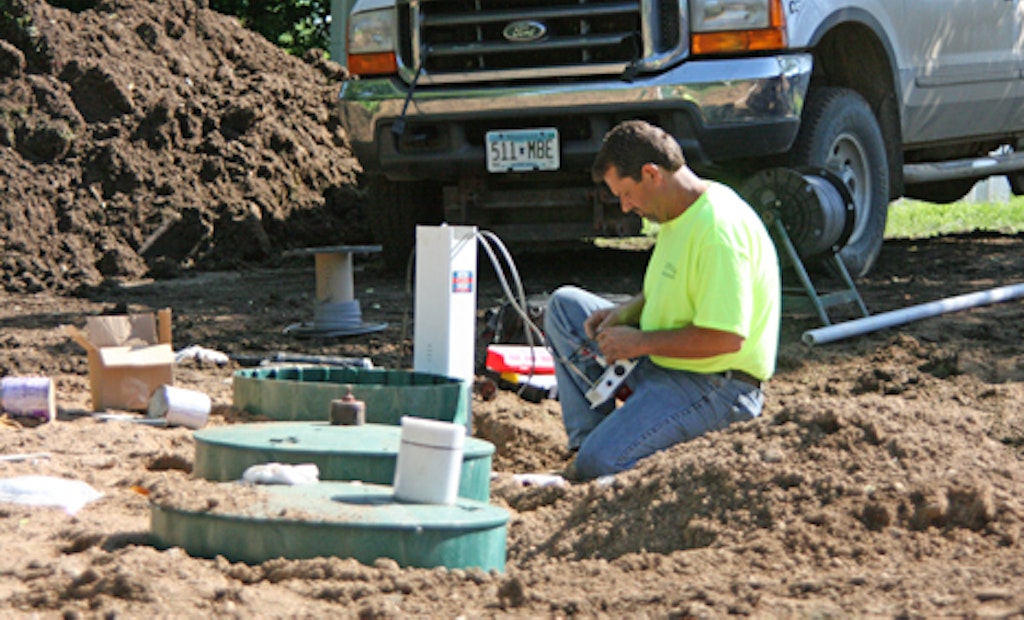
Interested in Systems/ATUs?
Get Systems/ATUs articles, news and videos right in your inbox! Sign up now.
Systems/ATUs + Get AlertsSince siphons do not have moving parts, there aren’t very many structural issues that can go wrong, but it’s important to inspect them regularly to ensure proper operation. The most common problem you’ll find is the siphon trickling or leaking effluent rather than providing the expected dose. This is called a trickling siphon or a siphon that has lost its prime. Depending on the application this can result in the effluent not being distributed properly.
When a siphon loses its prime, there is a loss of air pressure under the bell. Lack of air volume under the bell means the liquid level will not achieve the necessary head to drive the effluent into the distribution system. This is why having a cycle counter to monitor flow is a good idea.
A common method to install a cycle counter is to use a float switch attached to a battery-operated digital cycle counter. If the siphon is trickling, the liquid level is never high enough to trip the float. Since the dose is not being delivered, the cycle counter will not indicate that a dose has occurred, so you can check the cycle counter numbers to determine when the siphon is not operating properly and proceed to fixing the problem. You should check cycle counters at least once a month, which means you should have a maintenance agreement with the homeowner for ongoing service. Another recommendation is to install a high-water alarm that indicates if water is not leaving the tank.
Loss of prime can occur for a number of reasons. First, there might be an air leak from the bell. This can happen where the vent pipe screws into the top of the bell. During high flows, air is carried with the flow. Think large discharges at one time from the second floor of a house into the tank with the siphon. This causes the siphon to burp and then trickle. In houses where this type of use is likely to occur, adding a second dosing tank might be necessary to mitigate the flow. If this is not possible, you might need to add more baffling to solve the problem.
Another situation that can cause problems with siphon operation is when a home is intermittently occupied. These include lake homes, vacation cabins or snow birds that leave the north for warmer climates. If the water level is high when they leave, air can diffuse into the effluent over time, which reduces the air volume and causes trickling.
It’s relatively simple to fix the trickling problem as long as the siphon is easily accessible. You can blow air under the bell, drain the tank to a level below the open end of the vent pipe, or lift the siphon up in the tank so air goes under the bell (for 2- to 3-inch siphons).
For a complete list of alarms, controls and monitoring devices, visit www.onsiteinstaller.com/editorial/2014/07/alarms_controls_and_monitor_systems4.
About the Author
Jim Anderson is connected with the University of Minnesota onsite wastewater treatment education program, is an emeritus professor in the university’s Department of Soil Water and Climate, and education coordinator for the National Association of Wastewater Technicians. Send him questions about septic system maintenance and operation by email to kim.peterson@colepublishing.com.
This article is part of a series on dosing siphons:
- How the Heck Does a Siphon Dose a Drainfield?
- Tell Me More About These Dosing Siphons
- On Tap: Dosing Siphon Troubleshooting





